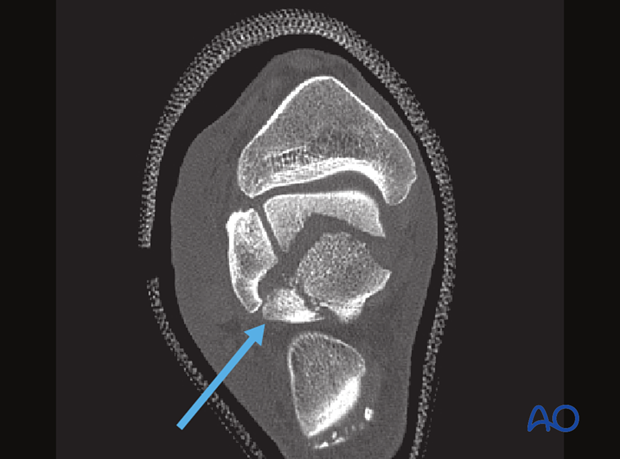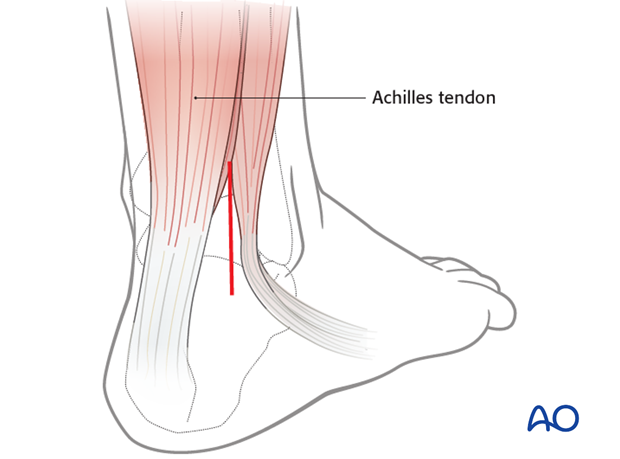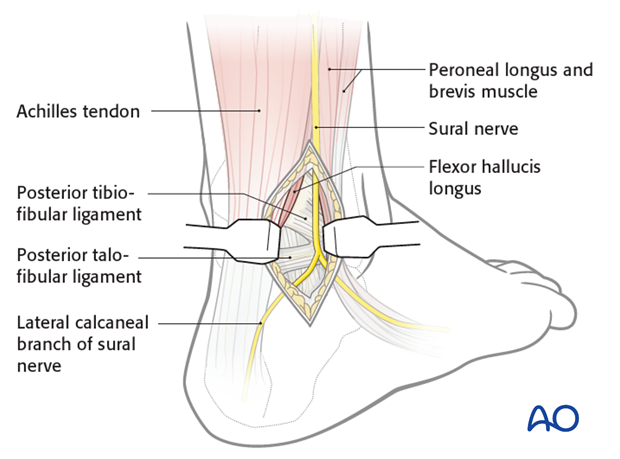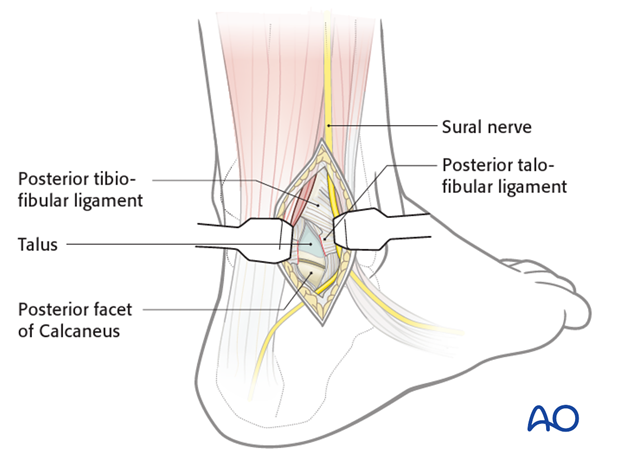Posterolateral approach to the hindfoot
1. Indications
The posterolateral approach can be used for acute posterior talar fractures and non-union surgery.
This approach can also be used to approach the posterior talus, the posterior aspect of the distal tibia, the posterior distal fibula and the posterior portion of the calcaneus.

2. Incision
This approach is very useful as it is a true internervous and intermuscular approach which is very safe. It is useful as an approach to the posterior talus, the posterior aspect of the distal tibia, the posterior distal fibula and the posterior portion of the calcaneus.
The skin incision is made vertically between the peroneal tendons anteriorly and the Achilles tendon posteriorly.

In the depth one encounters the sural nerve which must be protected together with its lateral calcaneal branch, which - if cut - results in a painful neuroma. Deeper and medially one encounters the belly of the flexor hallucis longus. For an approach to the talus and the subtalar joint and the Volkmann’s triangle the flexor hallucis longus must be retracted medially.

3. Deep dissection
This approach can be extended proximally to approach the distal tibia or distally to view the posterior talus and calcaneus.
Once the flexor hallucis longus muscle is retracted medially, the capsule of the subtalar joint is incised vertically. This will expose superiorly the body of the talus and inferiorly the calcaneus. In between is the posterior facet of the subtalar joint.













